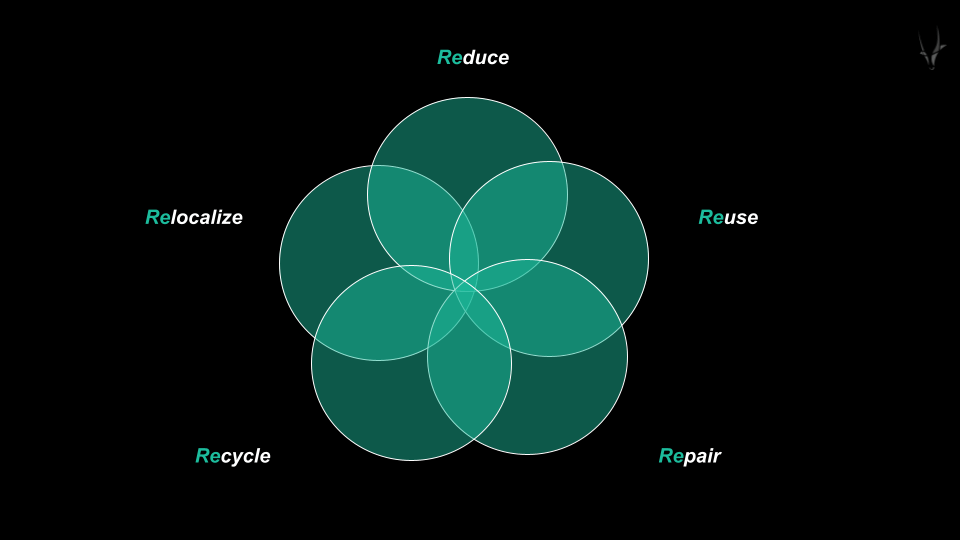Marketplace
6 profitable B2B marketplace business models that are helping to build a greener economy
The massive influx of green initiatives bolstering the world economy is bringing us into an era of the 5Rs: Reduce, Reuse, Repair, Recycle, and Relocalize. Explore these six B2B marketplace models that represent relevant business opportunities to apply the 5Rs, appealing to a customer base that values sustainable practices more with each passing year.


As more and more large European and American companies report on their Corporate Social Responsbility (CSR) initiatives, the importance of sustainable practices continues to draw attention. To many, it seems like companies are embracing this change to meet legal obligations—but this is only partly the case.
In fact, the desire to live up to sustainability standards is mainly driven by customer preferences. One study found that 77% of American consumers are motivated to purchase from companies committed to making the world a better place.
The massive influx of green initiatives bolstering the world economy demonstrates that we’ve finally understood our planet has finite resources. That’s why, from the 4Ps of marketing to the 7Ps, Recommerce is making up the era of the 5Rs:
- Reduce
- Reuse
- Repair
- Recycle
- Relocalize

Each of the 5Rs has inspired companies to think innovatively about their business models, creating space for new ways to incorporate sustainability into digital commerce. As is often the case, retail leads the way due to its exposure to public pressure, setting the stage for other industries and business models to follow suit.
These models work particularly well for marketplaces, which offer immense growth for B2B businesses. Here, we explore six B2B marketplace models that represent relevant business opportunities to apply the 5Rs, appealing to a customer base that values sustainable practices more with each passing year.
Re-use: Re-commerce Marketplaces
Offering products a second life is the most common model so far, one that is extremely popular in B2C and is starting to draw a lot of attention in all industries across the globe.
Refurbed and Backmarket are two examples of marketplaces for B2C and B2B refurbished electronics that are helping to reduce carbon emissions and minimize e-waste. Other examples include Vinted for C2C fashion and Decathlon’s Second Life initiative for second-hand sports gear.
The electronics, equipment, fashion, machinery, and automotive industries are the most obvious candidates. However, the model can be applied beyond these areas.
Reduce: Minimizing Waste with Production Surplus Marketplaces
Not to be confused with secondhand equipment, product surplus marketplaces let you list all production, equipment, food, or extra resources that you no longer need or never needed in the first place.
Targeting all industries, some specific use cases include addressing factories that need to unload their shelves for extra cash, manufacturers that stocked too many parts, real estate companies with leftover materials from a construction site, and manufacturers that overproduced their products, to mention a few.
Creating a marketplace of this nature requires an extensive network of potential vendors and buyers (often the same) in your ecosystem—but, once established, has the potential to generate a huge amount of value in times of supply chain uncertainty or for industries that need quick access to resources.
Nona Source and Queen of Raw are two B2B fashion examples of deadstock marketplaces, which are used as sourcing platforms for excess inventory. Outside of the retail sector, Full Harvest is a produce business marketplace that connects growers with commercial produce buyers with the goal of reducing food waste.

Recycle: Waste Management Marketplaces
Waste can be complex to liquidate, particularly when it’s bulky or requires chemical treatment. Therefore, some marketplaces make it their business model to offer services to help people dispose of waste while making a profit.
Whether using organic waste in biogas units, selling used plastics by the ton, or digitizing the metal scrap trade, these marketplaces come with exceptional features such as monthly subscriptions for recurring users and even greater services, such as transportation, warehousing, or revaluation.
This is a booming sector where the opportunity to make connections between industries should be leveraged.
Some examples are Cirplus, a digital procurement platform for sourcing and selling recycled plastics, Globechain, the largest ESG reuse marketplace, and Organix by Suez, a digital marketplace dedicated to the recovery of organic waste to transform it into new sustainable resources.
Reduce: Rental Marketplaces
A usage economy prioritizes using goods instead of owning them. This way of thinking is spreading across all industries and, when combined with sharing or renting to others, is helping to reduce production on a large scale.
Extremely popular in the mobility and automotive industries, where machines are expensive but easy to move, this model is also booming in seasonal and low-frequency usage equipment.
As an example, AgriShare is a marketplace for hiring or renting out agricultural resources between farmers and equipment manufacturers in Africa, which is doing important work connecting supply and demand in areas with less access to equipment.
There’s also Kwipped, a B2B equipment rental and leasing marketplace with items available to rent or finance, and Beleco, a B2B furniture rental marketplace.
Relocalize: Local Marketplaces
Local-made or even national-made marketplaces reduce the distance between producer, retailer, and consumer, are flourishing.
They mainly address services to connect you with your local plumber or home remodeler—but also products bound by production or transformation areas.
While the digitization of local butcher’s shops and bakeries is usually a model with little outcome, going regionwide or nationwide to boost the economy is favored by officials, who welcome these initiatives and sometimes even subsidize them.
Effective examples of local platforms include TaskRabbit, which matches freelance labor with local demand, MyHammer, which matches homeowners with local tradesmen, and Faire, a B2B marketplace for independent retailers and wholesalers.
Sustainability: Sustainable Production Marketplaces
Finally, we have sustainable production marketplaces. The objective of this model is to reunite producers, manufacturers, traders, or importers who abide by the same rules and promote sustainable models.
Usually associated with labels, they consider marketplaces as their digital extension.
Consider Upcycleluxe, the first Carbon Neutral Marketplace for sustainable fashion brands in India, and The Sustainable Marketplace, a one-stop shop for eco-friendly and sustainable products in the UK.
Applying the 5Rs to Our Digital Commerce Strategies
A circular economy is a collaborative economy. This explains the advent of marketplaces, which are based on the ‘many-to-many’ model.
As consumers, we have been calling for these models and have already widely adopted them offline and on C2C marketplaces like eBay or Facebook Marketplace.
Some companies have already achieved success, so we know it’s doable. But what’s missing is change management to adapt corporations’ core missions to greener ones, as well as the right technologies for scaling.
The good news? Composable Commerce solves the digital part of the equation with our powerful technology that enables even the most sophisticated models. And adoption is always easier with profitable use cases like the ones explained above.
To learn more about B2B marketplaces, check out our expert voices guide, which shares the most important success factors for this model, according to experts.
If you have an idea on how to make our economy greener, speak with one of Spryker’s marketplace experts to explore how we can work together.